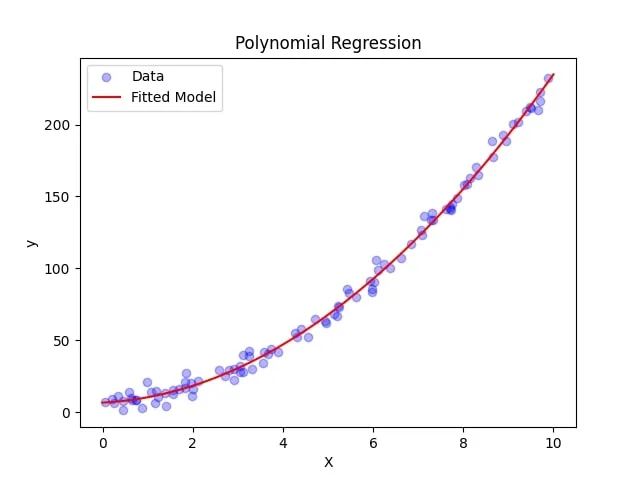
Objective Function in Machine Learning
The objective function in machine learning plays a pivotal role in guiding the training and optimization of algorithms.
Even more, it serves as the foundation for learning by providing a quantitative measure of how well a model performs.
In other words, it not only directs the optimization of a machine learning model but also enable the evaluation of its performance.
Furthermore, we can also fine-tune machine learning models for better performance by minimizing or maximizing the objective function.
Further in this article, we’ll delve into different kinds of objective functions for different types of machine learning.
Relationship between Objective Function, Loss Function, and Cost Function in Machine Learning
Although often used interchangeably, there are subtle differences between objective functions, loss functions, and cost functions.
Loss functions measure the discrepancy between the model’s predictions and the true values, while cost functions aggregate these individual losses over the entire dataset.
Objective functions, on the other hand, represent the overarching goal of the model optimization process. In other words, they can include minimizing the cost function, maximizing a reward function, or balancing multiple objectives.
Objective Function Types
Regression Objective Functions in Machine Learning
Mean Squared Error (MSE)
MSE is a common objective function in regression tasks, measuring the average squared difference between the predicted and true values.
Thus, by minimizing it, models aim to produce predictions that closely match the actual values.
Mean Absolute Error (MAE)
MAE calculates the average absolute difference between the predicted and true values. While similar to MSE, it’s less sensitive to outliers and provides a more robust measure of model performance in the presence of noise.
Huber Loss
Huber Loss combines the advantages of both MSE and MAE, behaving like MSE for small errors and like MAE for large errors.
In addition, this characteristic makes it less sensitive to outliers while still maintaining differentiability, which is crucial for optimization algorithms.
Classification Objective Functions in Machine Learning
Binary Cross-Entropy
Binary Cross-Entropy is an objective function used in binary classification tasks, measuring the divergence between the predicted probabilities and the true class labels.
Therefore, by minimizing it, models learn to output probabilities that closely reflect the true class distribution.
Multi-class Cross-Entropy
Multi-class Cross-Entropy generalizes binary cross-entropy to multi-class classification tasks, comparing the predicted probability distribution with the true class distribution.
Thus, minimizing this objective function helps the model learn to predict accurate class probabilities for multiple classes.
Hinge Loss
Hinge Loss is a popular objective function for support vector machines and other margin-based classifiers. It encourages the model to maximize the margin between classes, leading to improved generalization and robustness.
Clustering Objective Functions
K-means Objective Function
The K-means objective function measures the sum of squared distances between data points and their corresponding cluster centroids.
Furthermore, minimizing it helps the algorithm find optimal cluster centroids that minimize the within-cluster variance.
Gaussian Mixture Model Objective Function
The Gaussian Mixture Model objective function is based on the likelihood of the data given a mixture of Gaussian distributions. Maximizing this function enables the model to estimate the parameters of the Gaussian distributions that best fit the data.
DBSCAN Objective Function
DBSCAN does not have a specific objective function; instead, it relies on density-based clustering criteria.
To clarify, the algorithm groups points based on density connectivity, forming clusters of varying shapes and sizes.
Reinforcement Learning Objective Functions
Q-learning Objective Function
The Q-learning objective function aims to maximize the cumulative reward over time by learning the optimal action-value function.
Furthermore, the algorithm updates the function based on the difference between the current and target action values, known as the temporal difference error.
Policy Gradient Objective Function
Policy Gradient methods optimize the objective function by directly adjusting the model’s policy, which maps states to actions.
The objective function in policy gradient methods is typically the expected cumulative reward, which the algorithm seeks to maximize.
Actor-Critic Objective Function
In Actor-Critic methods, the objective function combines the benefits of both value-based and policy-based approaches.
The algorithm employs two separate networks, the actor and the critic, to optimize the policy and the value function, respectively. The objective function usually consists of the expected cumulative reward and the value function’s prediction error.
Properties and Considerations of Objective Function in Machine Learning
Convexity and Non-Convexity in Objective Functions
Convex objective functions have a unique global minimum, making optimization algorithms more likely to converge to the optimal solution.
On the other hand, non-convex objective functions, common in deep learning, have multiple local minima and saddle points, making optimization more challenging.
Continuity and Differentiability
Objective functions must be continuous and differentiable for gradient-based optimization methods to work effectively.
Non-differentiable functions can lead to difficulties in optimization, requiring alternative approaches such as subgradient methods or numerical approximations.
Trade-offs between Simplicity and Expressiveness
Simple objective functions can be easier to optimize but may not fully capture the complexity of the problem at hand. More expressive functions can better represent complex tasks but may be harder to optimize and prone to overfitting.
Regularization and its Impact on Objective Functions
Regularization techniques, such as L1 and L2 regularization, can be incorporated into objective functions to help control model complexity and prevent overfitting.
By penalizing large model parameters, regularization encourages the model to learn simpler, more generalizable solutions.
Dealing with Multi-Objective Optimization Problems
In some cases, machine learning tasks involve multiple conflicting objectives, requiring a balance between competing goals.
Techniques such as Pareto-based optimization or scalarization can be employed to combine multiple objective functions into a single, unified function for optimization.
Conclusion
To conclude, we have discussed the importance of objective functions in machine learning, their various types, and their role in guiding the training and optimization of models.
We also explored objective functions for regression, classification, clustering, and reinforcement learning tasks, along with key considerations such as convexity, differentiability, and regularization.


